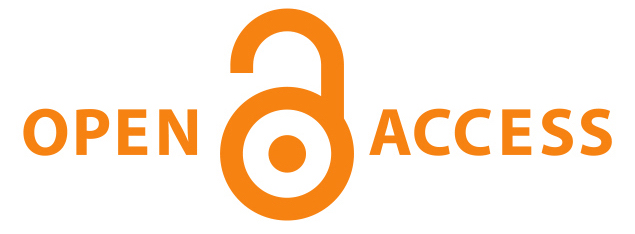Assessing the Impact of Telemedicine on Healthcare Outcomes in Rural Communities: A Systematic Review and Meta-Analysis
Keywords:
Access to care, Chronic disease management, Health disparities, Health outcomes, Meta-analysis, Rural health, Systematic review, Telehealth, Telemedicine, Implementation scienceAbstract
Around the world, health disparities exist in nearly every rural community. The geography, lack of providers, and the hurdle of access outside the community can create challenges for rural patients that can contribute to patterns of healthcare disparities. Telemedicine (TM) may be able to address some of these challenges by providing the opportunity for remote healthcare services through technology. While the adoption of TM has ramped up - particularly in the wake of the COVID-19 pandemic - there is a need for a comprehensive synthesis that rationalizes and reports on the impact of TM in measurable healthcare outcomes specifically for rural populations. The systematic review and meta-analysis aimed to:
1) Synthesize existing research about TM impact on key healthcare outcomes (clinical, access, utilization, satisfaction, cost) in rural populations;
2) Where applicable quantify the impact through a meta-analysis;
3) Identify key barriers and facilitators that successfully enable or support TM.
We conducted a systematic review of all studies published in PubMed, Embase, CINAHL, Cochrane Library, PsycINFO, and Web of Science from inception through October 26, 2023. Studies were included if they:
(1) researched a telemedicine intervention (synchronous, asynchronous, remote monitoring);
(2) involved rural populations (defined by study authors or validated metrics such as RUCA);
(3) provided quantitative data on healthcare outcomes pre-defined in the study;
(4) employed a comparative design (RCT, quasi-experimental, cohort, pre-post);
(5) published in English language. Two individuals screened the records independently, extracted the data, and assessed risk of bias, using the Cochrane RoB 2 tool in RCTs and ROBINS-I for nonrandomized studies. Meta-analyses, using random-effects models, were conducted on reasonably homogeneous outcomes (i.e., HbA1c change in diabetes, hospital admissions, satisfaction scores). Heterogeneous outcomes and implementation variables had a narrative synthesis.
78 studies met inclusion criteria (32 RCT; 46 observational). Main findings were:
A meta-analysis of diabetes management studies (n=15) indicated that TM interventions led to a significantly lower HbA1c (Mean Difference: -0.43%, 95% CI: -0.62 to -0.24, p<0.001). There were similar positive trends in hypertension control and reducing symptoms of depression, but there was more heterogeneity in these results. There was limited evidence looking at acute conditions; however, the evidence suggest potential for timely intervention.
There was a significant increase in access to specialty care (e.g., psychiatry, neurology, dermatology) that was not previously locally available. The meta-analysis indicated a significantly lower rate of all-cause hospital admissions (Risk Ratio: 0.88, 95% CI: 0.81-0.96, p=0.004) and emergency department visits were also significantly less often (Risk Ratio: 0.85, 95% CI: 0.77-0.94, p=0.002) related to participation in TM chronic disease programs.
Generally, satisfaction was high across studies (pooled satisfaction score >80%) with studies highlighting dimensions of convenience, reduced travel burden, and perceived quality of care.
Evidence was mixed. TM clearly reduced patient travel costs and time but studies reported mixed results regarding the reduction of the overall costs of the health system, often depending on the specific service, reimbursement models, and technology infrastructure that was previously committed. There were examples of cost-effectiveness in the evidence, especially for particular applications such as telestroke and ICU remote monitoring.
Key barriers to successful TM: poor broadband infrastructure, digital literacy issues (especially for older adults), reimbursement barriers, licensure barriers, and upfront costs for the technology. Key facilitators to successful TM: a strong local champion, provider training, ease of use for the technology, fit with workflows, sustainable funding model, and addressing "trust/comfort" from the patient perspective.
The evidence suggests that telemedicine has significant positive impact on important healthcare outcomes in rural communities, particularly expanding access to comprehensive specialty care, improving chronic disease self-management (e.g., substantial reduction in HbA1c), decreasing unnecessary hospital admissions, and creating high overall patient satisfaction. While challenges associated with infrastructure, equity, and sustainability remain, the evidence strongly supports TM as an important resource to address health disparities in rural health. Next, we must work to ensure that, moving forward, we focus on equity of access, a rigorous evaluation of the many diverse uses of TM, and the creation of viable, integrated delivery models with sustainability considerations tailored to rural contexts.
Downloads
Published
Issue
Section
License
Copyright (c) 2025 ACADEMIA Health Sphere Journal

This work is licensed under a Creative Commons Attribution 4.0 International License.









